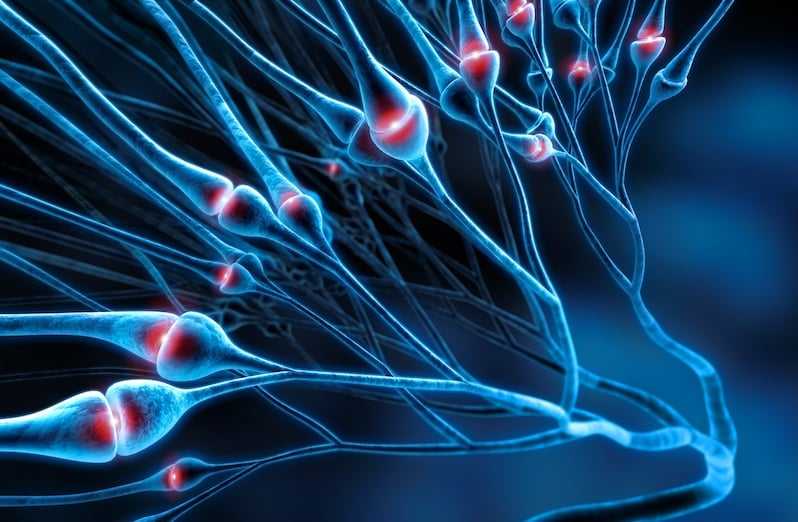The pig peripheral neuritis trauma (PNT) model is an important transitional model that bridges the gap between animal research and the clinic. While we discussed how the the pig PNT model shares many morphological and molecular pathology similarities with skin biopsies from human pain conditions in our poster, our chief scientist was the last, principle author in a preceding publication entitled “Peripheral Neuritis Trauma In Pigs: A Neuropathic Pain Model” in the Journal of Pain. In this paper, authors examine this model in terms of how it relates to the human pain response.

The PNT pig model for chronic pain is generated by surgically exposing the sciatic nerve and creating loose ligations around the sciatic nerve bundle using threads presoaked in CFA, an inflammatory agent. Following this procedure, the PNT pigs developed a constant, heightened sensitivity to mechanical stimulation as demonstrated through withdrawal thresholds to von Frey as well as feather test stimuli. Previously, the feather test had not been used to assess pain sensitivity in pigs despite its close resemblance to the light touch-evoked allodynia test commonly used to assess pain in humans.
As shown in this paper, 75% of the animals exhibited mechanical and tactile allodynia by day 28 post-surgery. This time point was chosen as it is considered to represent the chronic neuropathic phase. Unlike similar rodent sciatic nerve injury models, the PNT pigs were able to maintain their ability to walk or to stand on their injured leg and yet, still reflect human pain responses for hyperalgesia and allodynia measurements, which are indicative of painful neuropathy.
Analysis of spinal cord mRNA showed increased fractalkine receptor CX3CR1 levels, implying microglia involvement in pain initiation. Brain-derived neurotrophic factor (BDNF), thought to be a key player in neuropathic pain, was also elevated. Gene expression of acute inflammatory cytokines such as TNFα, IL-1β, CGRP and BDNF from sciatic nerve tissue collected near injury site suggests transient inflammation followed by a persistent high level of neurological markers.
Drug treatment with positive controls resulted in reduced hypersensitivity to von Frey filaments and feather stimuli. This reversal of spontaneous pain-related behavior occurred in a dose-dependant manner. Notably, treatment with aprepitant, shown to be effective in rodent models, resembled human clinical trial observations in its lack of analgesic efficacy.
These results strongly suggest that the pig PNT-induced trauma is a valid translational model for chronic pain induction (chronification). It presents a great preclinical model to test the efficacy as well as the safety of new pain therapy candidate drugs.
To read this article in its entirety, please follow this link.
http://www.ncbi.nlm.nih.gov/pubmed/26456763




